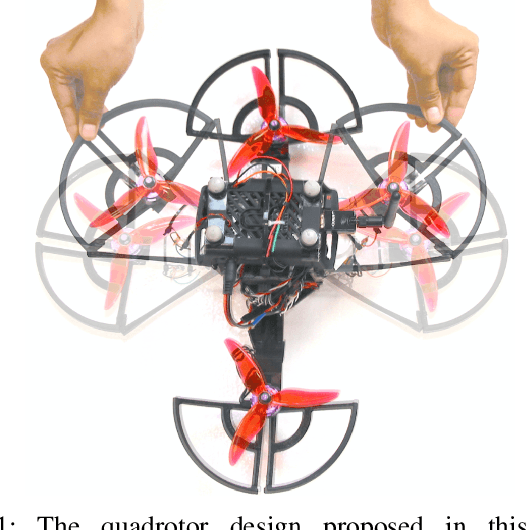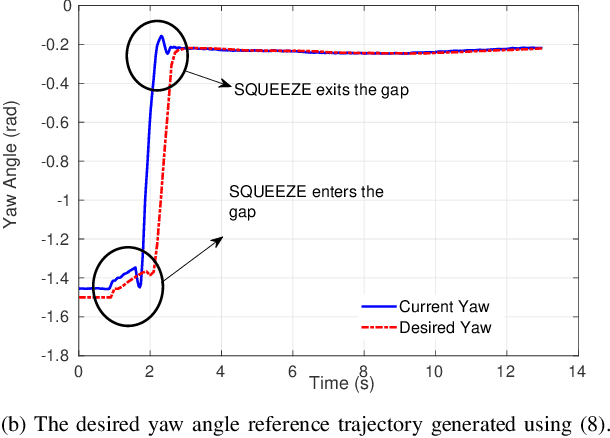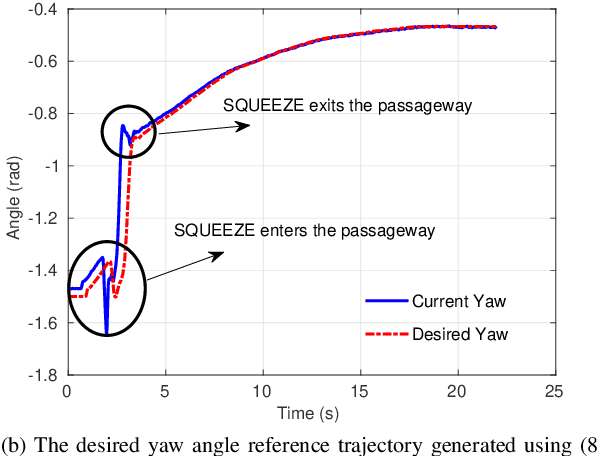Seyed Mostafa Rezayat Sorkhabadi
Invariant Extended Kalman Filtering for Human Motion Estimation with Imperfect Sensor Placement
May 20, 2022



Abstract:This paper introduces a new invariant extended Kalman filter design that produces real-time state estimates and rapid error convergence for the estimation of the human body movement even in the presence of sensor misalignment and initial state estimation errors. The filter fuses the data returned by an inertial measurement unit (IMU) attached to the body (e.g., pelvis or chest) and a virtual measurement of zero stance-foot velocity (i.e., leg odometry). The key novelty of the proposed filter lies in that its process model meets the group affine property while the filter explicitly addresses the IMU placement error by formulating its stochastic process model as Brownian motions and incorporating the error in the leg odometry. Although the measurement model is imperfect (i.e., it does not possess an invariant observation form) and thus its linearization relies on the state estimate, experimental results demonstrate fast convergence of the proposed filter (within 0.2 seconds) during squatting motions even under significant IMU placement inaccuracy and initial estimation errors.
Design and Evaluation of an Invariant Extended Kalman Filter for Trunk Motion Estimation with Sensor Misalignment
May 16, 2022



Abstract:Understanding human motion is of critical importance for health monitoring and control of assistive robots, yet many human kinematic variables cannot be directly or accurately measured by wearable sensors. In recent years, invariant extended Kalman filtering (InEKF) has shown a great potential in nonlinear state estimation, but its applications to human poses new challenges, including imperfect placement of wearable sensors and inaccurate measurement models. To address these challenges, this paper proposes an augmented InEKF design which considers the misalignment of the inertial sensor at the trunk as part of the states and preserves the group affine property for the process model. Personalized lower-extremity forward kinematic models are built and employed as the measurement model for the augmented InEKF. Observability analysis for the new InEKF design is presented. The filter is evaluated with three subjects in squatting, rolling-foot walking, and ladder-climbing motions. Experimental results validate the superior performance of the proposed InEKF over the state-of-the-art InEKF. Improved accuracy and faster convergence in estimating the velocity and orientation of human, in all three motions, are achieved despite the significant initial estimation errors and the uncertainties associated with the forward kinematic measurement model.
Design and Control of SQUEEZE: A Spring-augmented QUadrotor for intEractions with the Environment to squeeZE-and-fly
Oct 24, 2020



Abstract:This paper presents the design and control of a novel quadrotor with a variable geometry to physically interact with cluttered environments and fly through narrow gaps and passageways. This compliant quadrotor with passive morphing capabilities is designed using torsional springs at every arm hinge to allow for rotation driven by external forces. We derive the dynamic model of this variable geometry quadrotor (SQUEEZE), and develop an adaptive controller for trajectory tracking. The corresponding Lyapunov stability proof of attitude tracking is also presented. Further, an admittance controller is designed to account for changes in yaw due to physical interactions with the environment. Finally, the proposed design is validated in flight tests with two setups: a small gap and a passageway. The experimental results demonstrate the unique capability of the SQUEEZE in navigating through constrained narrow spaces.
Predictive Modeling of Periodic Behavior for Human-Robot Symbiotic Walking
May 27, 2020



Abstract:We propose in this paper Periodic Interaction Primitives - a probabilistic framework that can be used to learn compact models of periodic behavior. Our approach extends existing formulations of Interaction Primitives to periodic movement regimes, i.e., walking. We show that this model is particularly well-suited for learning data-driven, customized models of human walking, which can then be used for generating predictions over future states or for inferring latent, biomechanical variables. We also demonstrate how the same framework can be used to learn controllers for a robotic prosthesis using an imitation learning approach. Results in experiments with human participants indicate that Periodic Interaction Primitives efficiently generate predictions and ankle angle control signals for a robotic prosthetic ankle, with MAE of 2.21 degrees in 0.0008s per inference. Performance degrades gracefully in the presence of noise or sensor fall outs. Compared to alternatives, this algorithm functions 20 times faster and performed 4.5 times more accurately on test subjects.
 Add to Chrome
Add to Chrome Add to Firefox
Add to Firefox Add to Edge
Add to Edge